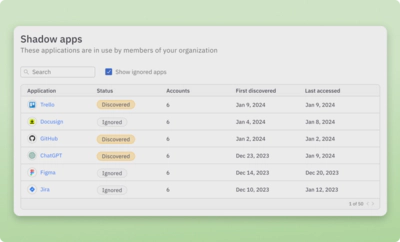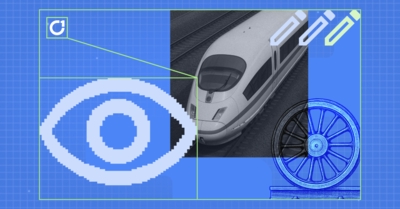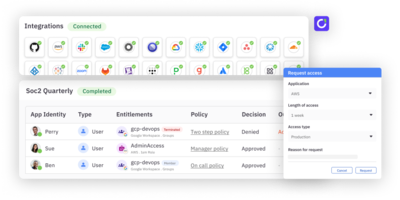Silent. Precise. Lightning fast. Wearing all black, master of martial arts… wait, no. Not that part.
I’m talking about Ninja SaaS.
These are the shadow apps that slip into your environment under the radar without procurement, security or IT review: a clever browser extension here, a slick AI plug-in there.
I like to call it Ninja SaaS because it’s not just lurking in the shadows, it has real intent. Quiet, effective, risky, and often solving a real business problem before IT even knows it exists.
Most IT teams treat shadow IT like a threat, but I like to take a different approach. Most of the time, these ninja tools are a sign that someone in your company saw a need and found a solution.
That doesn’t need to be a bad thing. In fact, it’s a good starting point.
The risk behind Ninja SaaS
The problem isn’t that people are trying to be sneaky. It’s that they don’t always have the full picture.
Take a hypothetical heat-mapping tool. Maybe it gives someone powerful visualizations in Google Sheets. That’s great for the end user. But what they might not realize is that the app was built by a single developer in a country your company can’t legally contract with. Or that the app has full read access to their entire Google Drive, not just the one file they were working on.
That’s how a useful tool turns into a potential security risk vector. Not because someone was being irresponsible, but because the process didn’t exist to catch the risks before they landed.
Start by saying yes
People are always going to seek out tools that help them do their jobs. The best way to prevent Ninja SaaS from taking hold is to make it easy for people to come to you first.
If your IT procurement process is designed to say “yes” when it can, then people will actually use it. And remember they might not know that another team already has a similar tool, and it isn’t their job to realize what security controls are missing. That’s where you come in.
Make enablement your default. Let your helpdesk be the front line of collaboration, not a wall people try to work around.
When Ninja SaaS goes viral
There’s a fine line between Ninja SaaS and viral SaaS. It starts with one person trying something new, then it spreads faster than you previously thought possible. Take a calendar app like Calendly or Clockwise, for example. One AE starts using it to make their life easier and suddenly, the whole sales team is on it and you’re staring down a surprise $50,000 line item that was never budgeted, vetted, or planned for from a resourcing standpoint.
Now let’s say the calendar tool doesn’t meet enterprise standards and is missing critical security features. But the team loves it and doesn’t want to give it up.
All of this could have been avoided with better visibility and earlier involvement.
How to keep Ninja SaaS from becoming a stealthy security problem
- Use OAuth controls to set boundaries
If you’re using Google Workspace, set up App Access Controls. Apps that request more than basic access (like just a name and email) will get blocked before they can go too far. It’s a simple but powerful control that can prevent significant risk. - Build a risk-based evaluation matrix
Not all shadow apps are high risk. Define what “low,” “medium,” and “high” risk looks like for your organization. An app that only posts reminders to Slack is probably fine, but one that has read access to all your public and private channels needs a closer look. - Make your process approachable
Train your helpdesk to ask questions and be curious, not no by default because that is written into policy. If someone wants to use a new tool, work with them to understand the use case. Often there’s a better solution already available or a safe way to try something new. - Know what’s already in your environment
You can’t manage what you can’t see. Tools like ConductorOne help you identify and evaluate apps that have already taken hold.
Speaking of tools…
At ConductorOne, we built shadow app detection into the platform so you can work with your Ninja SaaS, not against it. ConductorOne allows you to:
- Get a full picture: Track login activity, monitor OAuth scopes, and see what’s happening across your environment.
- Understand the impact: See who’s using what, how often, and what data is being accessed.
- Act with confidence: Sanction apps that meet your requirements. Block the ones that don’t. Ignore low-risk apps until they become relevant.
- Cut SaaS bloat: Eliminate duplicate or unused tools, reduce costs, and clean up your environment without slowing people down.

Ninja SaaS is already in your org. Are you going to fight it, or are you going to train with it?
Ready to spot your own ninja apps? Book a demo to learn more about shadow app detection with ConductorOne.





